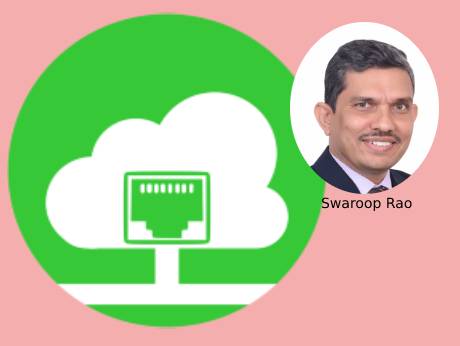
By Swaroop Rao, Vice President, Digital Engineering, Infogain*
March 30 20221: In the past decade, cloud transition has matured significantly with a paradigm shift from legacy on-premise IT business services to a cloud-first agile workplace. Recent research by Cloud Industry Forum (CIF) shows that the cloud has delivered results for over 90% of organizations in 2020, while tackling the challenges presented by COVID-19. Speaking specifically about India, IDC's COVID-19 Impact on IT spending Survey from May 2020 stated that as a result of the pandemic, 64% of the organizations in India were expected to increase their use of cloud computing and 56% expect to increase their cloud software usage.
This year, we will continue to observe an accelerated adoption of cloud-computing technologies. Cloud evangelists now recommend multi-cloud and hybrid-cloud approaches as critical pillars of the digital transformation ecosystem. Given today’s remote and hybrid work-operations, enterprises are increasingly following this cloud agnostic approach of operating workloads with more than one cloud provider.
A cloud-agnostic and multi-cloud strategy lets you tweak and adjust your cloud roadmap, without missing out on a feature that is exclusive to a single cloud provider because you are not locked into a relationship with a different provider.
Here are a few key strategies for enterprises seeking a cloud-agnostic approach in 2021:
Managed Databases: Using managed database services is a major strategy for being cloud agnostic. Nowadays, most public cloud offerings include managed database installment, maintenance, management, and access to a database. Major public clouds such as AWS, Google Cloud, and Microsoft Azure also offer defined possibilities and services for migrating databases between providers.
Use Containerization: The popularity of container technologies such as Docker and Kubernetes, is particularly significant for the cloud. A container as a software unit can package the source code together with its libraries, runtimes, and dependencies, allowing the application to be ported from one cloud environment to another without any conflict. Many cloud providers now have their own container app engines which are sold as consumable cloud services|
Automation: Regular tasks such as application deployment, performance management, logging, and monitoring are very time-consuming and involved in a diverse multi-cloud environment. They are the key to becoming cloud agnostic. To overcome this, enterprises can deploy infrastructure automation tools such as Ansible and Terraform that are already cloud agnostic.
Microservices architecture: Microservices helps you compartmentalize an app in the form of separate modules. This makes it very easy and efficient for development, testing and deployment of applications. The separate modules help make applications manageable and cloud agnostic.
Infrastructure as code: When working with various vendors for development of infrastructure it is difficult to follow a standard syntax for each tool. This lack of homogeneity can cause issues when switching from one cloud provider to another. To tackle this issue, businesses need to utilize third party tools that can be used to code their solutions onto cloud platforms.
DevOps culture: Having a DevOps culture is an intrinsic element for multi-cloud approach since it allows teams to quickly adopt various technologies made available by multi-cloud.
Multicloud security: Security over cloud is one of the biggest challenges in IT today. With the increasing adoption of cloud and multi-cloud platforms, enterprises need comprehensive training on the security requirements of each cloud provider. It is best to also have a centralized networking and security framework work across all cloud platforms.
Use of open standards: One cloud agnostic strategy is to make use of open standards, infrastructure provisioning tools, and configuration management tools.
Quality of the service provider: Businesses should focus on opting for the right enterprise-grade, vendor-agnostic cloud solution provider to tap into the benefits of multi-cloud. The provider should have a strong partnership with all leading cloud service providers for maximum benefits. Ideally, the service provider should be capable of managing multi-cloud and hybrid-cloud scenarios using a single dashboard.
A cloud-agnostic, cloud-native solution serves as a one-stop shop for all needs on multi-cloud because it helps to optimize an organization's ROI, introduce superior security, better performance, and protect in the event of a disaster scenario.
As businesses continue to intensify their digital transformation efforts, the multi-cloud reality is bound to expand further. A cloud-agnostic strategy will change from a visionary to a practical solution; especially as businesses realize the cost savings of implementing cloud and traversing data between solutions / environments.
Swaroop Rao leads the Architecture, Consulting and Technology Practice globally at Infogain. He has 25+ years of successful IT experience as a Business Transformation Leader specialized in Cloud Computing, Enterprise Mobility and Analytics